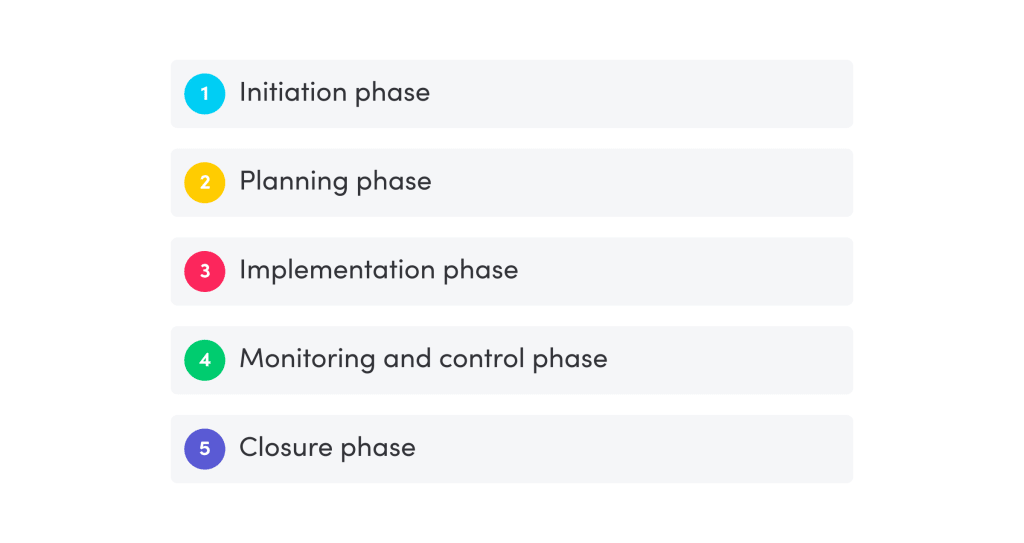Project execution: The key to successful projects
Blog: Monday Project Management Blog
19% of organizations deliver successful projects most of the time (source).
Yes, you read that statistic correctly.
19%.
Said another way — and maybe a bit more jarring:
81% of organizations do NOT deliver successful projects most of the time.
They fail to deliver. They fail to execute.
Adam Savage, American special effects designer and host of Mythbusters, once said, “Failure is always an option.”
Randy Pausch, an American educator, and professor is quoted as saying, “The person who failed often knows how to avoid future failures. The person who knows only success can be more oblivious to all the pitfalls.”
While both gentlemen make factual and compelling statements related to failure (and growth and success), organizations and project team members should strive to mitigate mistakes while focusing on project execution.
In this article, we’ll detail the ins and outs of project execution, discuss four project implementation methodologies that help with execution, and share a few ways to give your team members a better chance at achieving project success outcomes more often.
Project execution: Stage 3 of 5 of the project management process
According to the Project Management Body of Knowledge (PMBOK), all project management processes are part of 5 main phases or process groups.
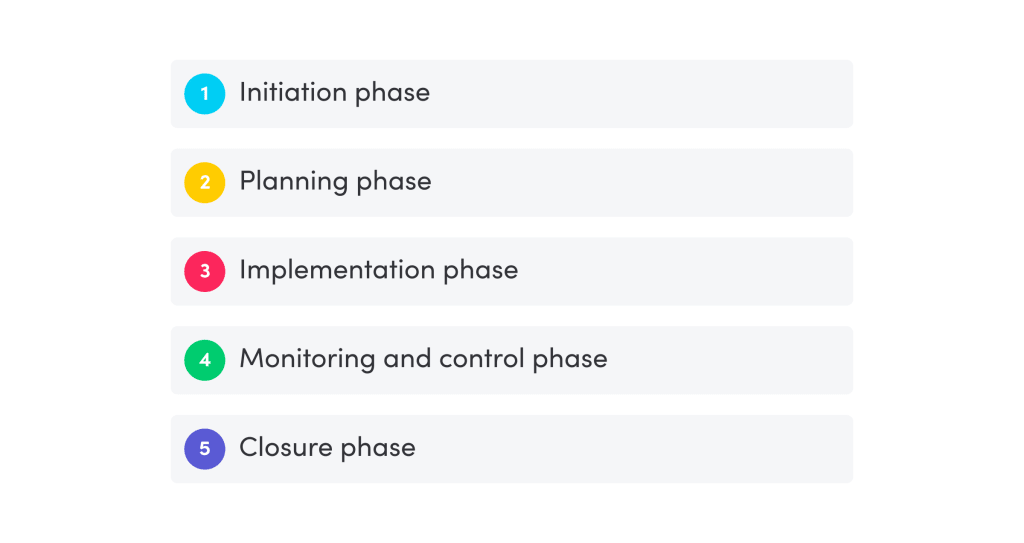
Stage 1: Initiation phase — Develop a project charter, pitch it to management, and get it approved.
Stage 2: Planning phase — Consider all relevant factors, including scope, deliverables, timeline, budget, project team, communication, risk, and so on.
Stage 3: Execution (implementation) phase — Do the actual project work. Often the longest phase of the project (more details below).
Stage 4: Monitoring and control phase— Use a workflow to track tasks and sub-items in real-time — also a chance to course correct any issues that arise.
Stage 5: (Analysis and) closure phase — Evaluate the overall performance.
It’s essential to spend sufficient time in the first two stages — initiation and planning. These two phases set the stage for the rest of the project, ensuring it’s set up for success.
However, project execution is vital. It’s where the rubber meets the road. It’s where ownership of tasks and small goals are assigned to ensure teams stay on track. It’s where a culture of productivity is established (think: daily progress meetings and reports).
Execution phase tasks include:
- Monitoring action step progress
- Hosting regular staff meetings to track workload, establish accountability, updating teams about ongoing progress and changes
- Offering leadership input to reduce bottlenecks and mitigate potential friction.
During the project execution phase, the project schedule is followed, and the wheels get set in motion … putting into action what was agreed to in stage #2 (planning).
Note: if you are running an Agile project, sprints will begin during the project execution stage. Each sprint informs what will be delivered next, edging the project closer to the end goal.
Four project implementation methodologies that help ensure successful execution
While project managers are the leaders on any given project, ensuring project success takes an all-hands-on-deck approach. Everyone on the project team is assigned specific, essential functions.
Project implementation is a team sport.
There are different primary project execution methodologies most often used:
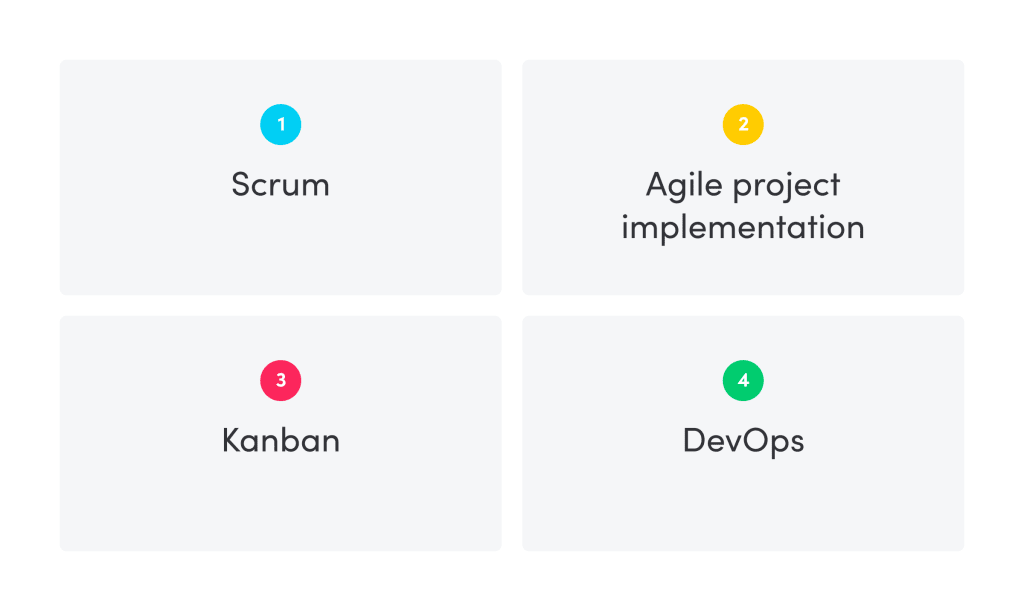
Let’s break each one down briefly:
SCRUM
Scrum is a framework for organizing, planning, and executing complex projects.
We recommend using monday.com’s sprint planning template to implement Scrum within your organization quickly.

Scrum is often a top choice for teams because of its simplicity and flexibility. This, in turn, means teams can move faster yet remain organized.
AGILE
Agile is not a step-by-step framework. Instead, it can be viewed more as a methodology (or philosophy) that involves an iterative approach to delivering a project throughout its life cycle.
The Agile approach aims to solve issues surrounding the disconnect between the product and the market it serves. Specifically, Agile values:
- Individuals and interactions over processes and tools
- Functioning end product over comprehensive documentation
- Customer collaboration over contract negotiation
- Responding to change over following a plan
KANBAN
Kanban is a visual strategy that leverages a board — consisting of columns and cards — to break down a project into actionable pieces.
A basic Kanban board includes three columns for “Working on it,” “Done,” and “Stuck.”

A more detailed, sophisticated Kanban board includes more columns (see below):
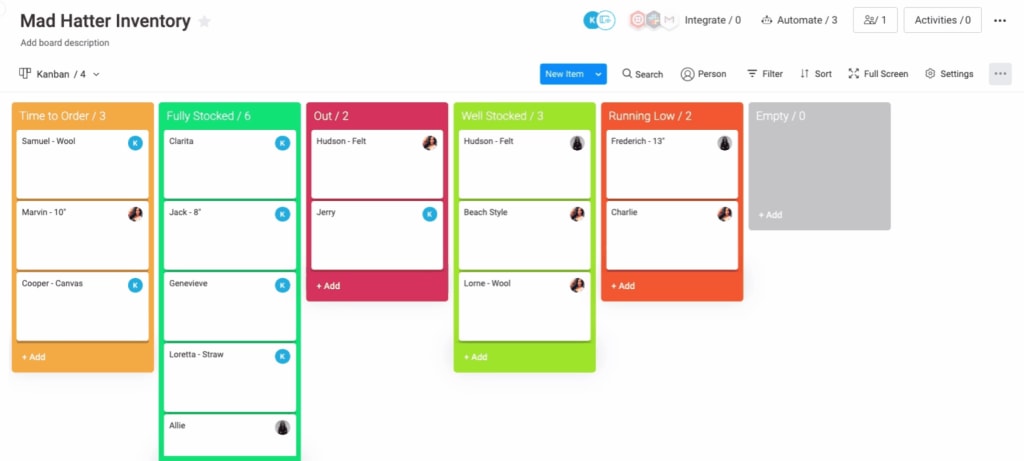
Using monday.com, you can modify your columns to fit your specific project demands best.
Read more about Kanban here.
DEVOPS
DevOps is one of the standard project implementation methodologies. It combines software development and IT operations — developers perform feedback, quality assurance, and security checks.
The goal of DevOps is to “shorten the systems development life cycle and provide continuous delivery with high software quality” (Wikipedia).
In this method, developers perform these actions throughout the development process instead of at the end, resulting in increased speed and reduction in time-consuming fixes that cause bottlenecks.
No matter what project implementation method you choose (or combination of methods), good portfolio management software helps ensure strategy is aligned with project execution.
And we believe monday.com is the answer.
Use monday.com to help with flawless project execution
To give your team a better chance of project success — one both internal and external stakeholders can be proud of — requires software to help manage.
monday.com‘s Work OS provides the flexibility to build and adapt to any workflow, project, or process. It also helps teams keep track of project execution.
Specifically, we recommend using the Product Roadmap Template to track progress during the execution phase (often the longest phase) of your projects.
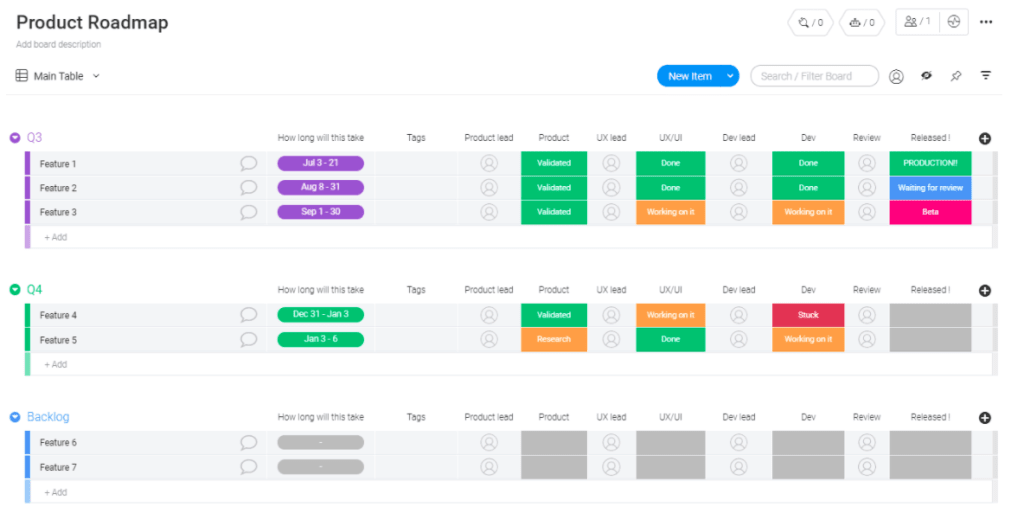
This product roadmap becomes your team’s shared, singular source of truth template to showcase the vision, direction, priorities, and progress of a product’s development over time.
This template is beneficial during the project execution phase as it serves as the plan of action, aligning the organization around short and long-term project goals.
Whether you choose a Gantt chart view to see a high-level overview or select another type of board view (there are many to choose from), monday.com offers many ways to communicate the big picture with external stakeholders and the finer details with your internal team.
Start by selecting the monday.com template that best fits your needs, and then customize it for your specific project. From there, seamlessly integrate all of your favorite tools — from Outlook to Dropbox to Slack to Google Drive — to work directly with monday.com.
You are off and running.
See why 125,000+ companies choose monday.com.
The post Project execution: The key to successful projects appeared first on monday.com Blog.
Leave a Comment
You must be logged in to post a comment.
